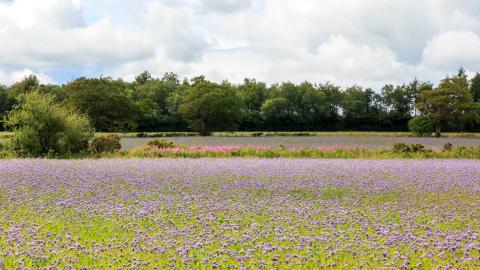Although many establishment principles are the same as cash crops, cover crops require a unique approach.
Find out more about cash crop establishment
Timing of sowing
The time of sowing should be guided by the cover crop species/variety.
For example, establishing a cover crop after late-harvested crops, such as maize, is often only suitable on light/medium soils.
In most situations, following early-harvested combinable crops, a cover crop can be drilled or broadcast followed by seedbed consolidation.
- Establish cover crops in good time and exploit favourable conditions (warm and moist soils) to achieve good establishment and early growth
- Most autumn-sown cover crops are sown from August to mid-September
- However, some are sown outside this window – for example, some legumes benefit from an earlier sowing
- Later-sown cover crops have less time to develop and may not provide adequate soil protection or enhance soil quality
- Late sowing or low soil moisture often results in poor establishment
The types of cover crops pages include information on the time of sowing
Seed rates
Seed rates depend on cover crop choice and field conditions. When using seed mixes (different species and seed sizes):
- Reduce component rates (compared to rates when used alone)
- Minimise ‘settling out’ in the seed hopper to avoid uneven species distribution
- Consider row widths and seed spread
The types of cover crops pages include information on seed rates
Establishment methods
Establishment methods should be guided by cover crop choice, equipment and field conditions.
- Good soil and seedbed conditions are more critical than the sowing date
- Cover crops can be sown by broadcasting or drilling
- Broadcasting tends to work better for smaller-seeded species on light and medium soils
- Drilling tends to work better where seed-soil contact is poor, such as on heavy clay soils (but may add costs)
- Where mixtures are used, periodically mix the seed in the drill
- Good seed-soil contact is required for germination and emergence
- Seedbed rolling after sowing enhances seed-soil contact and conserves moisture (however, avoid rolling wet soils)
- In some situations, consider mowing or grazing cover crops
- Inputs depend on the season and cover crop (monitoring is essential)
- Some autumn crop inputs and pest protection may be needed to gain maximum benefit
- There is little impartial information on starter fertiliser use in cover crops or nutrient release
You can add up to 30kg per hectare of nitrogen if:
- cover crops and green manure need help to establish
- the main aim of the cover crop is to add organic matter
This can help to produce the highest amounts of biomass in the cover crop or green manure.



